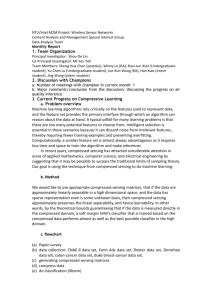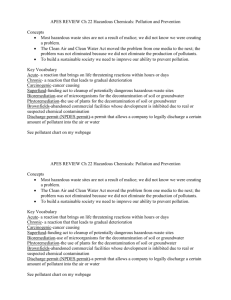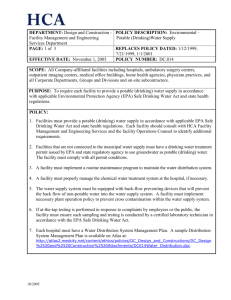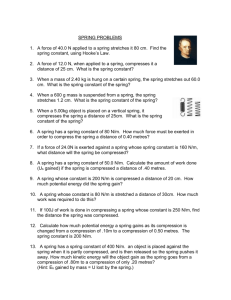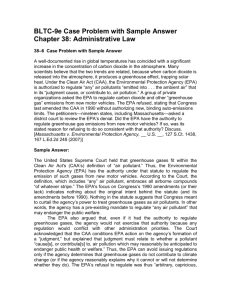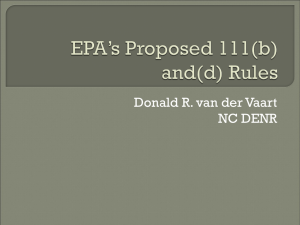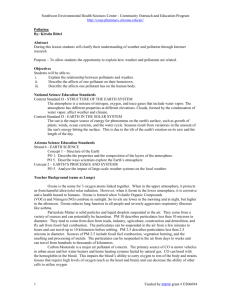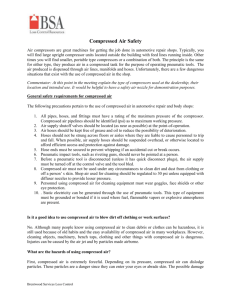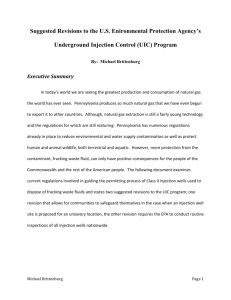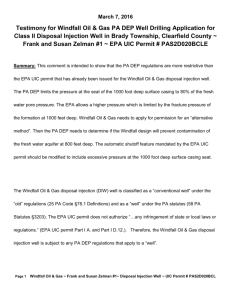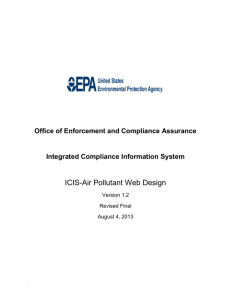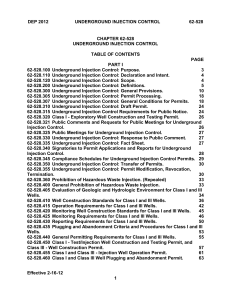, 2007 Page 1 Draft of February 5, 2007 , 2007 State Environmental
advertisement
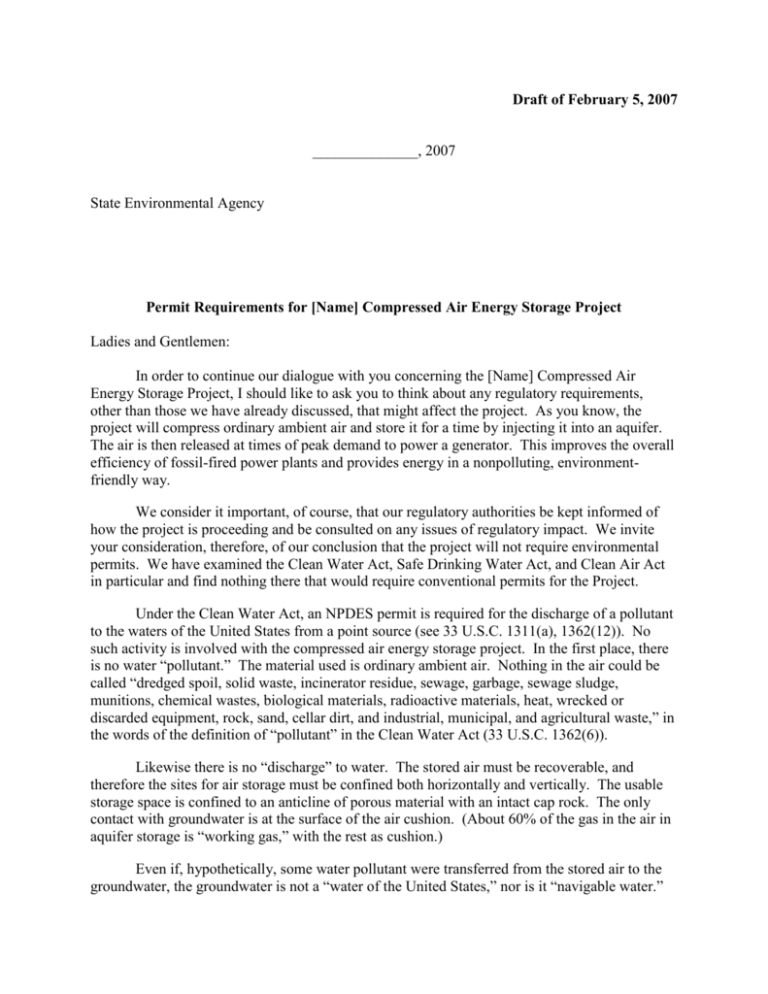
Draft of February 5, 2007 ______________, 2007 State Environmental Agency Permit Requirements for [Name] Compressed Air Energy Storage Project Ladies and Gentlemen: In order to continue our dialogue with you concerning the [Name] Compressed Air Energy Storage Project, I should like to ask you to think about any regulatory requirements, other than those we have already discussed, that might affect the project. As you know, the project will compress ordinary ambient air and store it for a time by injecting it into an aquifer. The air is then released at times of peak demand to power a generator. This improves the overall efficiency of fossil-fired power plants and provides energy in a nonpolluting, environmentfriendly way. We consider it important, of course, that our regulatory authorities be kept informed of how the project is proceeding and be consulted on any issues of regulatory impact. We invite your consideration, therefore, of our conclusion that the project will not require environmental permits. We have examined the Clean Water Act, Safe Drinking Water Act, and Clean Air Act in particular and find nothing there that would require conventional permits for the Project. Under the Clean Water Act, an NPDES permit is required for the discharge of a pollutant to the waters of the United States from a point source (see 33 U.S.C. 1311(a), 1362(12)). No such activity is involved with the compressed air energy storage project. In the first place, there is no water “pollutant.” The material used is ordinary ambient air. Nothing in the air could be called “dredged spoil, solid waste, incinerator residue, sewage, garbage, sewage sludge, munitions, chemical wastes, biological materials, radioactive materials, heat, wrecked or discarded equipment, rock, sand, cellar dirt, and industrial, municipal, and agricultural waste,” in the words of the definition of “pollutant” in the Clean Water Act (33 U.S.C. 1362(6)). Likewise there is no “discharge” to water. The stored air must be recoverable, and therefore the sites for air storage must be confined both horizontally and vertically. The usable storage space is confined to an anticline of porous material with an intact cap rock. The only contact with groundwater is at the surface of the air cushion. (About 60% of the gas in the air in aquifer storage is “working gas,” with the rest as cushion.) Even if, hypothetically, some water pollutant were transferred from the stored air to the groundwater, the groundwater is not a “water of the United States,” nor is it “navigable water.” ______________, 2007 Page 2 We also see no need for a permit for an “underground injection” well under the Safe Drinking Water Act. If the subsurface storage of compressed air is subject to the Underground Injection Control program at all, it is most likely a Class V well (see 40 CFR 144.6), and Class V wells are authorized by rule in 40 CFR 144.84(a). For our project there will be no disposal of a pollutant into a well or underground injection of hazardous waste. Injecting pure compressed air into an aquifer, for recovery later, presents no risk of contaminating an underground source of drinking water. For a different type of project, underground sequestration of carbon dioxide, EPA has found it appropriate to permit injection wells associated with research and development as UIC Class V experimental technology wells. See Memorandum, Cynthia C. Dougherty, Director, EPA Office of Ground Water and Drinking Water, to State/Regional UIC Contacts, July 5, 2006, at 2. This is for permanent sequestration of the gas, however, and EPA has some concern about potential impacts of C02 injection on ground water and underground sources of drinking water, on human health and the environment, and on fluid displacement and pressure. See Memorandum, Cynthia C. Dougherty and Brian McLean of EPA to Water Management Division Directors et al., “Using the Class V Experimental Technology Well Classification for Pilot Carbon Geologic Sequestration Projects -- UIC Program Guidance (UICPG#83) (Deliberative Draft). These concerns are not presented by our compressed air storage. The compressed air is merely stored, not permanently sequestered, and ours is a commercial project rather than research and development. Likewise the storage of air for the Project will not generate, transport, treat, store, or dispose of hazardous waste so as to be subject to the Resource Conservation and Recovery Act (RCRA). Compressed air is not a “waste,” nor is it “hazardous” (see the Resource Conservation and Recovery Act, 42 U.S.C. 6903(5)). Finally, there appears to be no question of the need for a permit under the Clean Air Act. There is no emission of a regulated air pollutant, only the compressing and decompressing of ordinary ambient air. Whatever air pollutants might be present in the air are at ordinary background levels, none of them attributable to the project or to the process of generating electric power. In short, it appears plain to us from the terms of the statutes and regulations that ours is not the sort of project that requires conventional environmental permits. But we invite your consideration of this issue so that we do not overlook some other regulatory requirement. We would be happy to hear your views on the subject. Yours very truly, cc: EPA Region 99999.001101 RICHMOND 1952625v1
